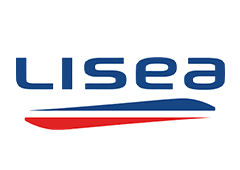Biodiversity: the next big challenge for transport companies
Responsible finance
Biodiversity: the next big challenge for transport companies
-
02 March 2022
-
Real Assets
-
Infrastructure, Sustainability
Reading time: 14 minutes
Biodiversity loss is a major sustainability challenge for transport and infrastructure companies, due to the demands that building and operating their assets can place on the natural environment. Indeed, John Tobin-de la Puente, Professor of Practice at Cornell University and previously Global Head of Sustainability at Credit Suisse, argues that “biodiversity loss is the next climate change”.
Biodiversity loss is the next climate change. The private sector will play an increasingly important role in biodiversity conservation.
The term biodiversity describes the variety of living things on earth and in different geographical areas and types of ecosystem. Biodiversity in its broadest sense is the richness of life on Earth. It occurs at all levels – genetic, species, and ecosystem – and it is often best illustrated by considering the wide variety of plants, animals, and micro-organisms that exist across the planet. Today, biodiversity is in a rapid decline.
Virtually every stage of infrastructure and transport companies’ value chains has a direct impact on biodiversity, Professor Tobin told delegates at the third meeting of Ardian’s Transport Working Group (TWG), which was set up by the Infrastructure and Sustainability teams to help portfolio companies transition to a low-carbon economy.
“Plant and animal species are disappearing at an unprecedented rate, due to additional stresses on ecosystems also linked to climate change.” said Raphaëlle Muhlmann-Eytan, Director of Asset Management for Ardian Infrastructure.
There is growing attention on biodiversity which in turn creates pressure on industrial groups, institutions and public authorities to improve their strategies and management practices.
Ardian’s TWG brings together six transport-focused companies from its infrastructure portfolio including three motorway operators, Ascendi from Portugal, ASTM, based in Italy, and Vespucio Norte from Chile, along with SEA, which operates Milan’s two airports, and LISEA, which operates the 340-km high-speed rail link between Tours and Bordeaux in France. Former portfolio company Indigo, the French car park operator, is the sixth member of the group, which meets periodically to share experience and best practices across a range of sustainability issues.
Ardian is keenly focused on the challenges that transport and infrastructure companies face in mitigating biodiversity and environmental impacts. “Since last year we have integrated the assessment of biodiversity within our Infrastructure portfolios via our impact measurement and management approach,” said Pierre Klemas, Managing Director in the Ardian Sustainability team.
We have put in place effective processes to identify and protect vulnerable species and many companies have adopted formal biodiversity management systems.
“That said, efforts should go beyond protection and also target net species and habitats gains in all areas where our portfolio companies have direct influence.”
Muhlmann-Eytan added: “It is becoming widely accepted that loss of biodiversity has a measurable financial cost with fundamental natural inputs progressively disappearing for agri-food and industrial uses. Private investors have an extremely influential role to play in promoting conservation, restoration and sustainable use of biodiversity and ecosystems.”
Across the Ardian Infrastructure portfolio, management teams are working to find solutions that balance the need to expand essential infrastructure while conserving natural wealth. Miguel Martin, CBDO, at Ascendi said: “We are committed to promoting an ethical and responsible relationship with the natural world, thus further valuing and protecting biodiversity. We have a culture of respect for the conservation of nature and natural heritage in the regions where we operate, and we undertake specific actions in partnership with local biodiversity NGOs.”
We are aware of the strong links between climate change, biodiversity loss and economic prosperity: while business activities may have an impact on biodiversity and climate change, the wellbeing of the business itself depends on the state of natural capital, including the ecosystems that provide essential goods and services.
“Together with a conscious and transformative approach to energy consumption and GHG emissions, nature is our best defence against climate change-related dynamics. As one of the main infrastructure operators worldwide, the ASTM Group is committed to the conservation and protection of biodiversity and ecosystem services. Therefore, the group intends to promote the biodiversity of ecosystems, by developing new projects in a sustainable manner and by protecting and promoting the development and growth of our natural heritage.”
Steps such as these are critical to secure infrastructure companies’ “licence to operate”. During the TWG meeting, executives from LISEA and SEA shared details of their programs to monitor and conserve biodiversity during major expansion projects.
Resource-intensive projects
The construction, operation, and maintenance of transport assets rely on large quantities of materials – especially minerals and timber – as well as intensive water and energy use, which must often be extracted from regions rich in biodiversity. If not managed properly, transportation and infrastructure projects can result in biodiversity loss through a variety of impacts including pollution, diminished water resources, habitat loss, and in the case of some highways by enabling unplanned human access and exploitation of natural resources.
Many critics see agriculture and infrastructure development as the biggest causes of deforestation.
Transport and infrastructure projects are also highly dependent on the benefits the natural world provides – referred to as ecosystem services. For example, these include the natural infrastructure protection from landslides and flooding that trees and forests provide. Oyster reefs buffer coasts from waves, reduce coastal erosion and protect highways infrastructure from storm surges.
Infrastructure development vs conservation
The challenge for companies that build and operate infrastructure is that they are caught between competing pressures. On one hand, economic development, population growth and urbanization mean that many more infrastructure assets are needed in the short term. Professor Tobin mentioned estimates that urban areas will expand by 1.2 million km2 by 2030, potentially degrading up to 40% of existing protected areas globally, while 25 million km of paved roads and 335,000 km of railway tracks will be needed by 2050. As a result, a third of all endangered species could potentially be threatened by infrastructure development over the next 30 years.
-
1.2M km²
expansion of urban areas by 2030
-
25M km
need of paved roads by 2050
-
335,000km
need of railway tracks by 2050
Meeting that growing demand for infrastructure, however, inevitably puts infrastructure companies under pressure to safeguard the natural environment and conserve biodiversity – from governments and regulators, as well as from private investors increasingly focused on sustainability. Governments are seeking both to accelerate economic development and to enhance the protection of the natural world by supporting conservation initiatives such as “30 by 30”. This aims to increase the size of protected areas globally to 30% of the world’s terrestrial and marine environment by 2030.
-
40 %
potential decline of existing protected areas by 2030
-
33 %
of all endangered species potentially threat by infrastructure over the next 30 years
-
30 %
of the world's terrestrial and marine environment will turn into protected areas by 2030
How should we measure and manage biodiversity?
Many governments are seeking to balance their economic development and conservation goals by adopting so-called No Net Loss (NNL) policies. These require companies to minimize biodiversity losses resulting from development projects and to offset the remaining negative impacts through restoration measures. However, Professor Tobin acknowledged that companies faced a major challenge in setting biodiversity conservation targets because there is no commonly accepted way of measuring it, unlike the metric universally adopted in discussions of climate change: Millions of Tonnes of CO2 Equivalent.
Helping to reconcile the competing demands of infrastructure development and conservation is now a priority all members of Ardian’s TWG.
LISEA’s approach: avoid, reduce, compensate
In building its high-speed rail link, explained Lise Dauchet, CSR Manager, LISEA used the No Net Loss framework. During the planning stage it sought to avoid damage to local biodiversity by choosing less damaging construction methods. It reduced its impact during construction, for example by securing its sites to prevent wildlife from getting in and becoming trapped, and finally it is working to compensate the residual impact of its project for the duration of its concession.
As one of Europe’s biggest rail projects, the line passed close to numerous important habitats and an estimated 223 endangered species were potentially affected, including European mink and otter, corn crake and bustard.
The company worked closely with the scientific community and local organizations along the route of the rail link to carry out a long-term program of ecological monitoring. For example, populations of bird species and yellow-bellied toads were monitored between 2014 and 2019 in different areas over this period and the project concluded that over three years the measures taken to offset the impact of the rail link on biodiversity were successful. However, a lack of data about some species populations before the project began made accurate comparisons difficult – highlighting again the challenge of measuring biodiversity impacts on an accurate manner.
Partnerships with local stakeholders and the scientific community have helped LISEA to create and maintain strong and appropriate biodiversity governance for the duration of this concession.
LISEA’s rail project also highlights the growing interest in biodiversity among governments and infrastructure regulators. Under its concession contract for the rail link, LISEA was required to create the LISEA Biodiversity Foundation. The foundation supported 102 projects developed with local partners along the route to preserve these areas’ natural heritage, with €4m committed between 2012 and 2020. A scientific assessment of these 102 actions was implemented in partnership with France’s Natural History Museum in 2019.
-
102
initiatives of LISEA Biodiversity Foundation with local partners to preserve biodiversity along the route of LISEA’s rail project
Milan airports seek a ‘licence to grow’
In Milan, SEA, which operates the city’s two airports, is expanding its cargo handling facilities at Malpensa, which is located in the Ticino area, Europe’s largest river park. This results in “significant biodiversity commitments” that the company will respect as part of its “licence to grow”, said Giorgio Medici, Environment and Airport Safety Manager at SEA.
SEA’s Malpensa Biodiversity Masterplan 2035 aims to build the new facility on national parkland next to the airport’s existing cargo area. The new facility will be constructed in three stages to match growing demand and will ultimately occupy about 39ha. In parallel, SEA will safeguard and improve biodiversity and habitat quality on about 120ha of land within and around the airport, more than compensating for the impact of the construction project. The company has set up 20 initiatives in different areas of Ticino to test ways to protect parklands while construction is underway.
-
20
initiatives of SEA in Ticino to test ways to protect parklands while construction is underway
“We have recently signed an agreement with the Ticino Park authority for a long-term co-operation plan that goes beyond the Malpensa Masterplan. This is the basis to support our ambition to develop a completely different level of co-operation between two parties that have to work together to find a value-added equilibrium among their own specific priorities,” said Medici.
Why biodiversity governance is key
The experiences of LISEA high-speed rail and SEA Milan Airport in incorporating biodiversity protection into their development plans echoed the key lessons Professor Tobin shared from his career “at the intersection of biodiversity, conservation and finance”.
Infrastructure and transport companies need to develop strong governance policies around biodiversity conservation to provide a “reputational shield”, he said. They should manage their relationships with civil society stakeholders with great care and where regulators and public authorities are concerned, they should practice “proactive risk management” to avoid crises that would oblige regulators to intervene.
Above all, he argued, everyone needed to recognize that biodiversity will become as important as climate change over the next few years and that it was therefore critical to develop “a common language of biodiversity KPIs such as the climate space has today”.
Six steps to integrate biodiversity conservation into sustainability
-
Governance
Agree on robust biodiversity policies at the top level
-
Measurement
Establish frameworks to measure positive and negative impacts
-
Target-Setting
Define corporate and science-based targets
-
Investment
Identify local and national biodiversity funding needs and investment opportunities
-
Mitigation
Commit to achieve No Net Loss. Incorporate nature-based solutions and natural infrastructure
-
Communication
Ensure transparent communication and partnerships with all stakeholders
We suggest you to read or re-read our two last meetings:
The one dedicated to carbon emissions, here
The one dedicated to ESG challenges, here
ASCENDI
Ascendi, the 2nd largest Portugal motorway network, manages infrastructure assets and provides toll collection and operation & maintenance services. It owns majority interests in 6 Portuguese road concessions, covering 630km in operation.
ASTM
ASTM is one of the world’s largest operator in the management of motorway concessions with around 4,500 kilometers of network under concession in countries such as Italy, Brazil and the United Kingdom.
LISEA
The LISEA project represents one of the biggest concession contracts in Europe. LISEA was awarded the concession contract for the Tours-Bordeaux HSL (South East Atlantic (SEA) project). Under this contract established in June 2011 by SNCF Réseau, LISEA is responsible for funding, designing, building, maintaining and operating the new HSL until 2061 (for 50 years).
SEA
SEA Group manages the airports of Milano Linate and Milano Malpensa providing all services and related activities. The business model of the SEA Group is based on the characteristics of the three business areas in which the company operates: commercial aviation, general aviation and energy.
VESPUCIO NORTE
Vespucio Norte Express is a critical urban express highway in Santiago de Chile with 29 kilometers of extension. Túnel San Cristóbal in Santiago de Chile is a 4 kilometers toll tunnel expressway in Santiago.
















